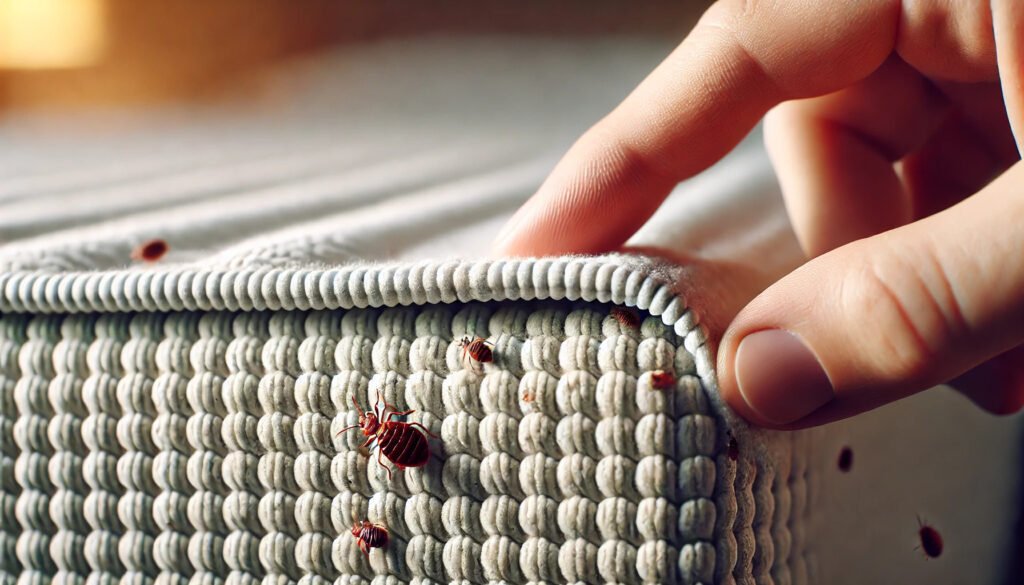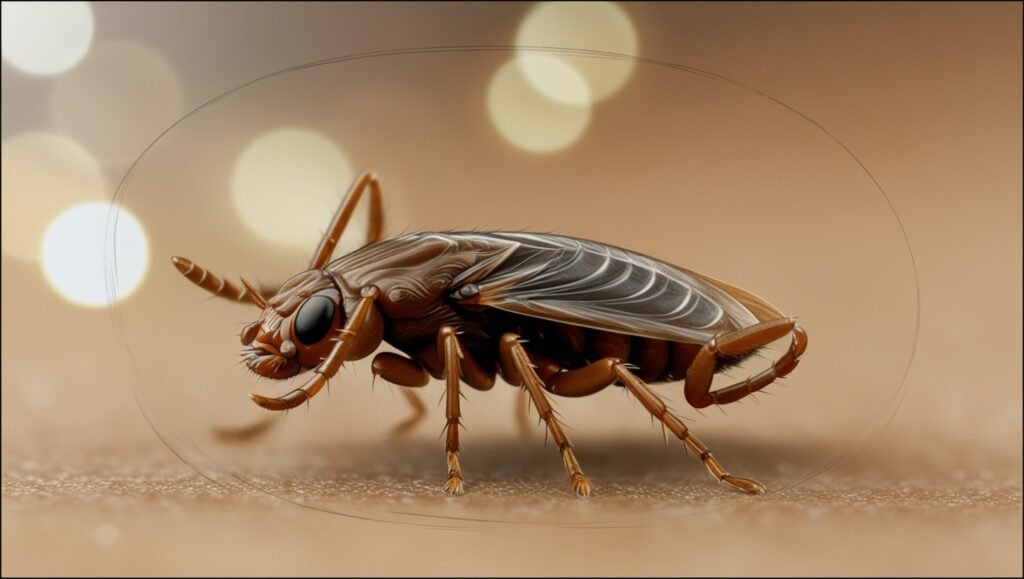The bed bugs in your home can be nervous. A common question many people have when they suspect an infestation. Can you see bed bugs with the naked eye? Bed bugs are tiny, sneaky, and excellent to hiding their self, so it can be natural to wonder if they can spot without special equipment. So in their case understanding how to recognize these pests and the signs of their presence is crucial for dealing with them as fast as possible
This article provides a complete look and identifying bed bugs, and just because spotting bed bugs are hard so we can understand why they’re hard to spot, and what are the actionable steps you find and manage bed bugs in your home. By the end of the article, you’ll know what bed bugs and how they’re look like, where to find them, and expert’s steps that you can follow and control an infestation.

Problem or Challenge
Why Is It Hard to Spot Bed Bugs?
Bed bugs are elusive and are too hard to detect When until they’ve spread. Now we finds are a few challenges that people face when trying to identify them:
Size and Color: Adult bed bugs are the size of an apple seed, but their flat bodies and color of the bed bug is reddish-brown and allow them to blend in with our home furniture and mattresses
Different Life Stages: Bed bugs go through several stages from born to adult, and they change their look at each stage form born to adult. When they are in there born stage it’s very difficult to find them
Nocturnal Nature: Bed bugs are be likely to come out at night, usually when people are asleep. That’s why they cannot make them to be noticed during the day.
Hiding Spots: Bed bugs hide their self in any small gaps in our home such as the seams of mattresses, bed frames, and even behind the electric switches or tables
Solution/Actionable Advice: So what, Identifying and see bed bugs with the naked eye is possible with a systematic approach and proper attention to detail. Here’s a guide on how to locate bed bugs and manage an infestation effectively:
Recognize What Bed Bugs Look Like
- Adults: when they are Fully grown, they are small but visible. They’re length is about 5-7 millimeters long and shape of it can be oval, and color is reddish-brown. After feeding, so they become slightly larger and darker.
- Nymphs: the size of the Bed bug nymphs are smaller and have a more clear or yellowish color. They’re also harder to see and become darker after feeding.
- Eggs: Bed bug eggs are tiny (around 1 mm) color is same as snake eggs white, and resemble grains of salt. They are found in large number of eggs in the hidden.
Step 2: Where to Look for Bed Bugs
- Mattresses and furniture: Begin by inspecting the seams and edges of your mattress and furniture. Bed bugs are so close to their food source. so these areas are prime hiding spots.
- Furniture: Check the seams and furniture, like couches, chairs, and sofas, as well as under cushions.
- Headboards and Bed Frames: Bed bugs can hide in electric switches cracks in door and also behind the AC
- Other Areas: They are more likely to hide their self behind the picture frames
Recognize Signs of Bed Bugs
- Rusty or Reddish Stains on Sheets: Bed bugs cause these stains when they feed, leaving behind tiny bits and traces of blood
- Dark Spots: Small, blackish spots can be found on sheets, mattresses, and furniture, so it can be a sign of a bed bug.
- Eggshells or Shed Skins: Bed bugs change their skins multiple times when they are adult, leaving tiny, yellowish casings behind.
- Bite Marks on Skin: when Bed bug bites on our skin so the bites make should look like line on the skin where they bites your skin should be red on that place. They are more likely to bite in legs and foots
Steps for Controlling and Eliminating Bed Bugs
- Wash and Heat-Treat Linens and Fabrics: Wash all the bedding, curtains, and then dry them on the highest heat point you do easily. And use hair blower and use full heat and blower in tiny whole such as furniture and other. So this will effectively kills bed bugs and their eggs.
- Vacuum Thoroughly: You can use a vacuum cleaner with a nozzle attachment to vacuum mattresses and furniture and cracks around the room. And make that vacuum empty as earlier as possible.
- Encasements for Mattresses and Box Springs: Cover your mattress and box spring in that case bed bugs can’t be entered in and prevent’s new ones from finding a home there.
- Use Insecticides Carefully: Certain insecticides are effective against bed bugs, so they should be used cautiously. You can use professional advice.
- Consult Pest Control Services: For larger infestations. how can help with licensed pest control company to control large infestations. They have more methods or treatments and techniques, including heat treatments more other.
thebughub expert’s study
- Thebughub Case Study: Dealing with a Hotel Infestation: John, he has travel almost 15 countries, began experiencing itchy bites after a hotel stay. Using a flashlight, he found signs of bed bugs around his hotel mattress seams. The experience highlighted how being vigilant, even in high-end hotels, can prevent bringing bed bugs home by carefully checking luggage and clothing.
- Data Point: Bed bed bugs cases are common in Urban areas: on our search in recent years, some cities have reported increased cases of bed bug infestations in both residential and public area. According to the National Pest Management Association (NPMA), bed bugs a spread and are more common in residential area. Like apartments and hotel.
information and Readability
This post provides comprehensive information on everything we know about the topic. We are exciting to share your experiences, leave comments, or ask any type of question about bed bugs infection. So we can help you and assist you future.
Conclusion
Because bed bugs are small, you can see them with the naked eye. If you want to identifying bed bugs, you can check small tiny whole around you. Signs of bed bugs are like droppings and shed skins. they infect your skin. If you use heat treatment in your home you can easily wipe them all there eggs, tiny bugs, adult bugs,
Have questions, feedback, or want to learn more about bugs? We’d love to hear from you! Feel free to reach out via our Contact Us page


